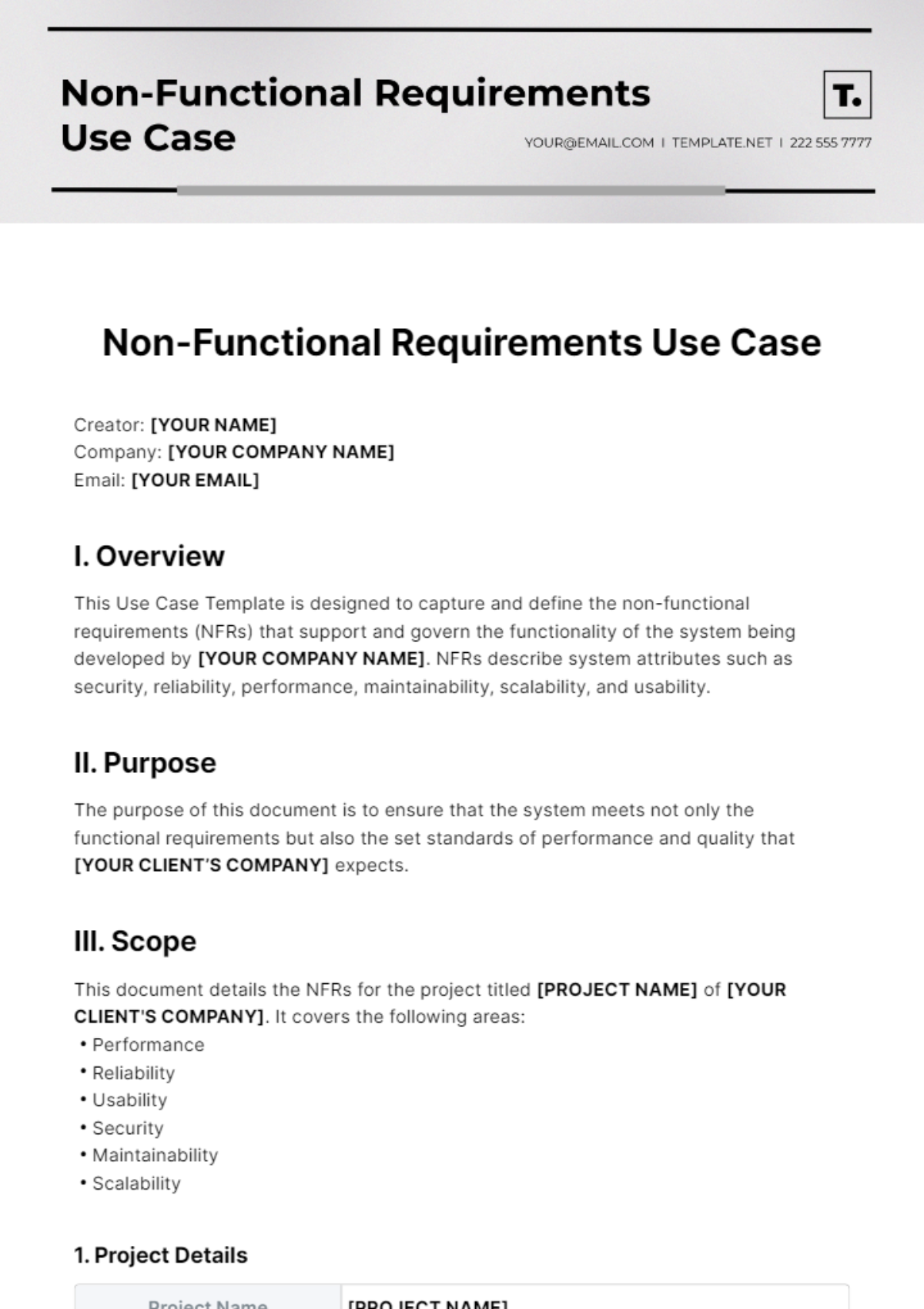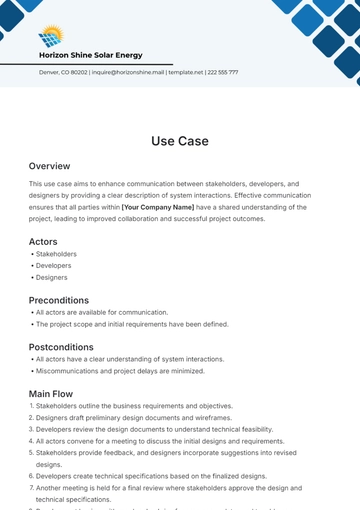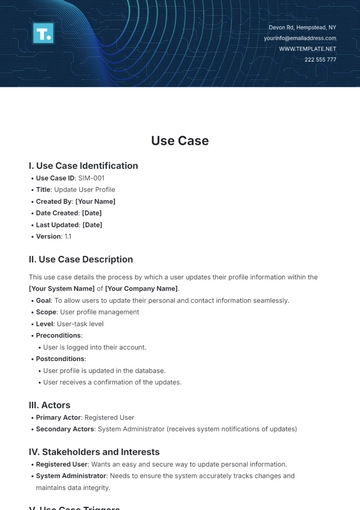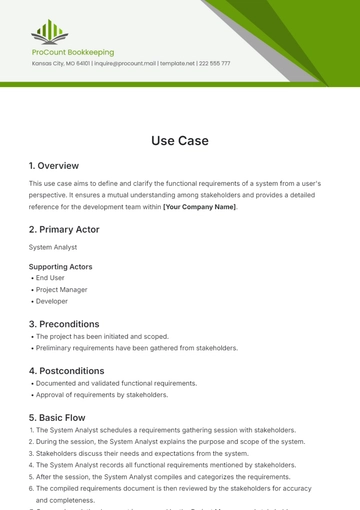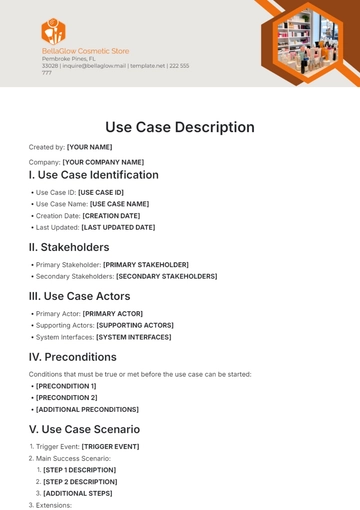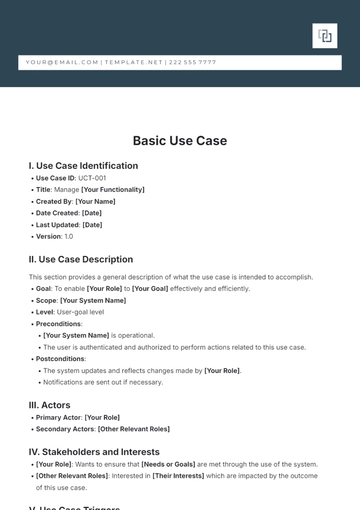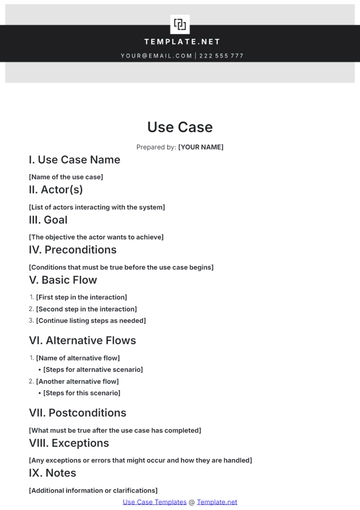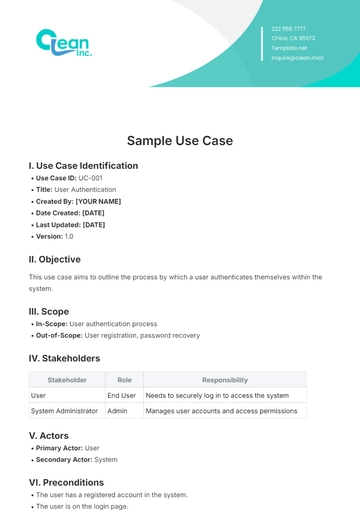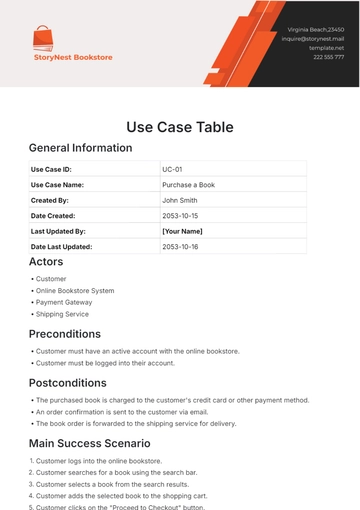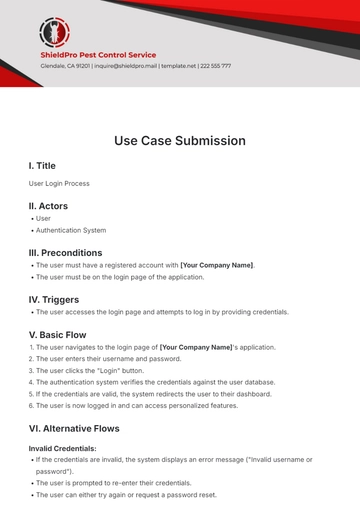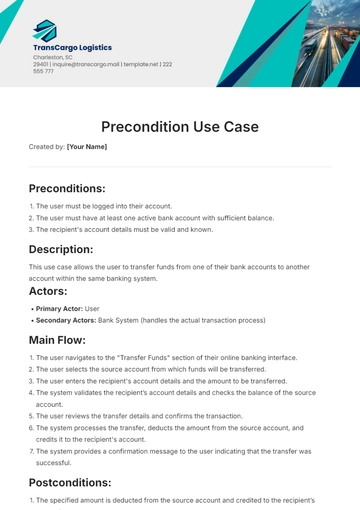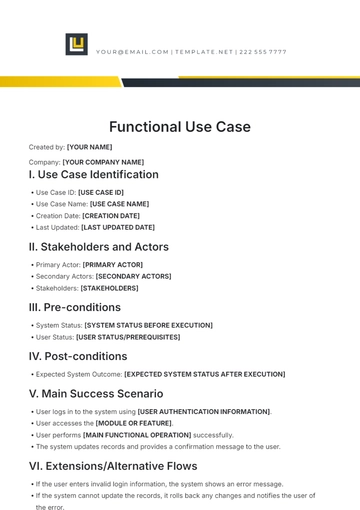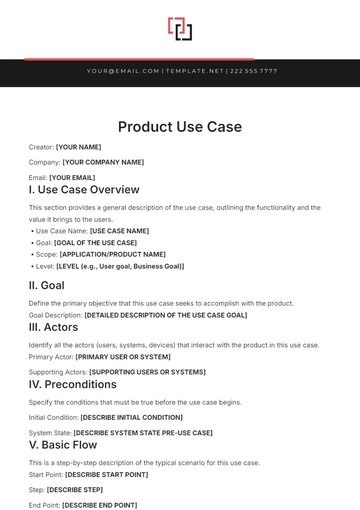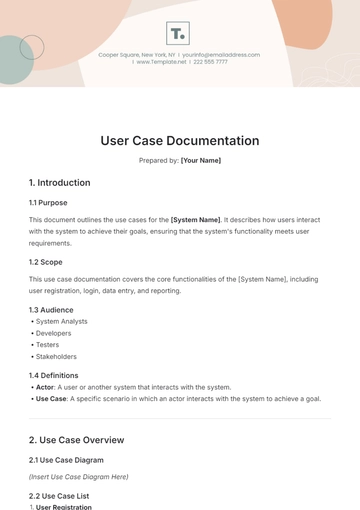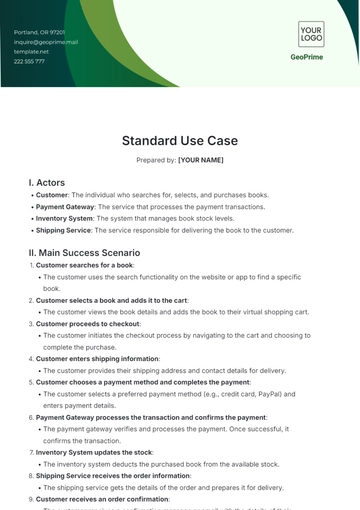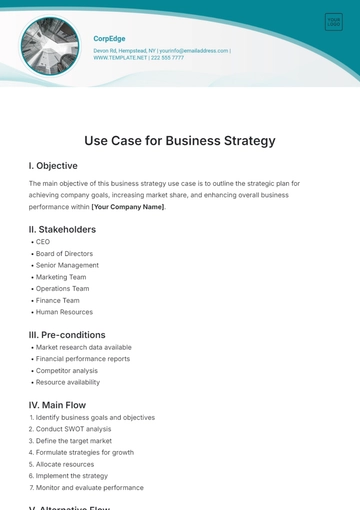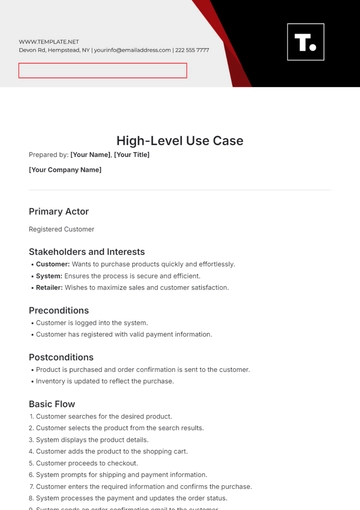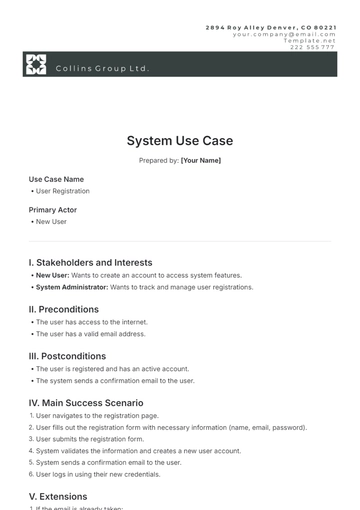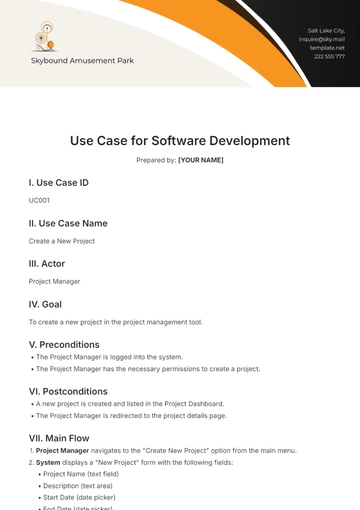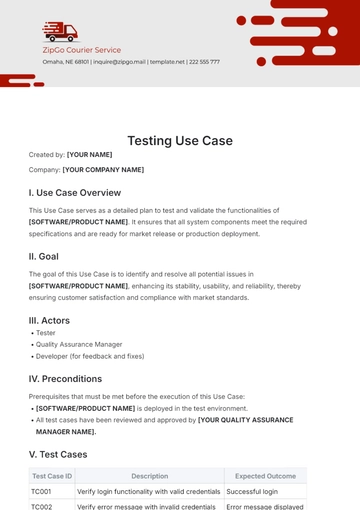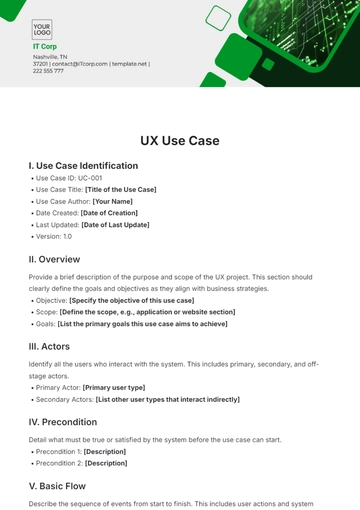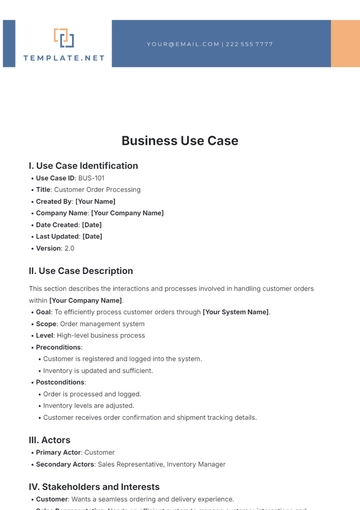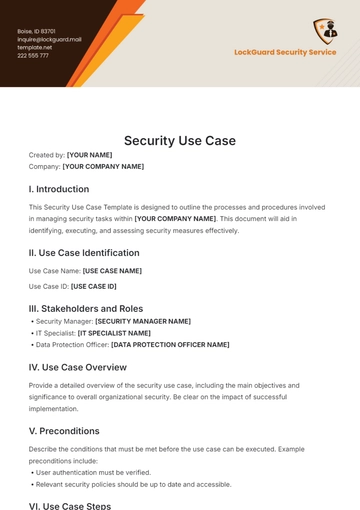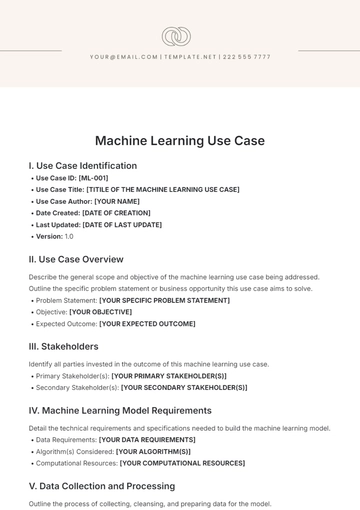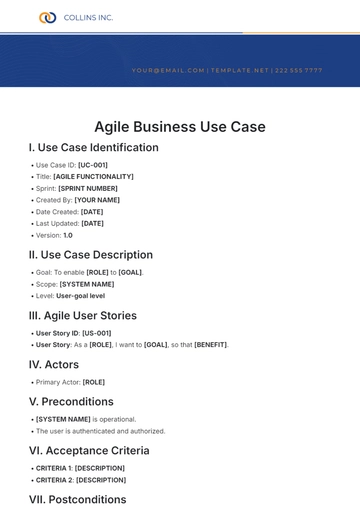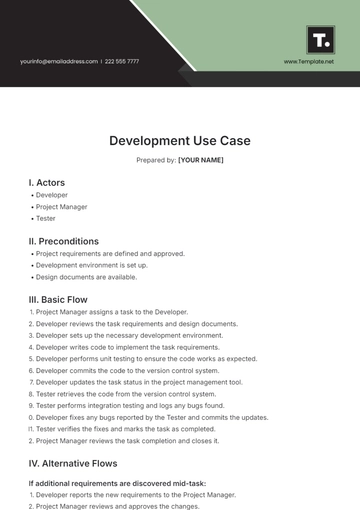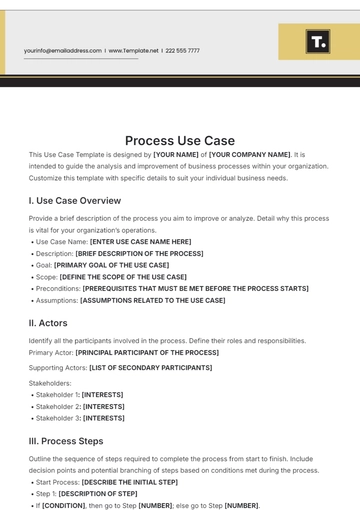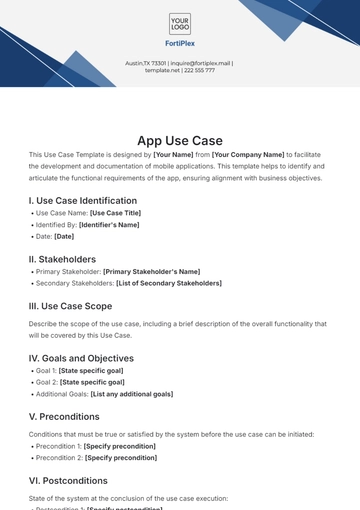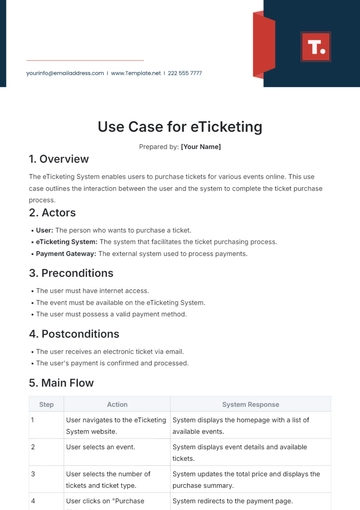Non-Functional Requirements Use Case
Creator: [YOUR NAME]
Company: [YOUR COMPANY NAME]
Email: [YOUR EMAIL]
I. Overview
This Use Case Template is designed to capture and define the non-functional requirements (NFRs) that support and govern the functionality of the system being developed by [YOUR COMPANY NAME]. NFRs describe system attributes such as security, reliability, performance, maintainability, scalability, and usability.
II. Purpose
The purpose of this document is to ensure that the system meets not only the functional requirements but also the set standards of performance and quality that [YOUR CLIENT’S COMPANY] expects.
III. Scope
This document details the NFRs for the project titled [PROJECT NAME] of [YOUR CLIENT'S COMPANY]. It covers the following areas:
Performance
Reliability
Usability
Security
Maintainability
Scalability
1. Project Details
Project Name | [PROJECT NAME] |
|---|
Project Manager | [PROJECT MANAGER NAME] |
|---|
Delivery Date | [DELIVERY DATE] |
|---|
IV. Non-Functional Requirements
1. Performance
Performance requirements detail how the system performs under specific conditions.
Response Time: The system should respond within [DESIRED RESPONSE TIME] seconds under normal load conditions.
Load Capacity: The system should handle up to [MAX USER LOAD] concurrent users without performance degradation.
2. Reliability
Reliability requirements specify the capability of the system to maintain its performance over time.
3. Usability
Usability requirements address how easy it is for the users to use the system and learn its features.
4. Security
Security requirements outline the measures needed to protect the system against unauthorized access and data breaches.
5. Maintainability
Maintainability requirements ensure the system can be updated and modified without introducing defects.
Maintenance Windows: Scheduled maintenance shall occur during off-peak hours, preferably [MAINTENANCE WINDOW].
Code Documentation: All code shall be well-documented and comply with [CODING STANDARDS].
6. Scalability
Scalability requirements define how the system should grow in response to an increase in demand.
Scaling Strategy: The system must support both vertical and horizontal scaling up to [MAXIMUM SCALE LIMIT].
Cloud Integration: The system should be compatible with [CLOUD SERVICE PROVIDER] services for easy scaling.
V. Approval
The following signatures signify the approval of the non-functional requirements specified in this document:
Name | Title | Date | Signature |
|---|
[APPROVER NAME] | [APPROVER TITLE] | [APPROVAL DATE] | |
Use Case Templates @ Template.net
